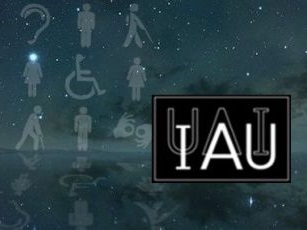 For Global Astronomy Month (GAM) 2017, Astronomers Without Borders (AWB) are teaming up with the IAU Working Group Astronomy for Equity and Inclusion and have compiled a list of thirty resources to be highlighted during April.
For Global Astronomy Month (GAM) 2017, Astronomers Without Borders (AWB) are teaming up with the IAU Working Group Astronomy for Equity and Inclusion and have compiled a list of thirty resources to be highlighted during April.
People with special needs are often overlooked when planning outreach and educational activities and remain a group still frequently excluded from events. The thirty resources highlighted are a free, open source collection intended to support and facilitate the implementation of activities for people with disabilities. The selected best practices, programs, examples of activities, resources and activities guidelines are dedicated to helping outreach and education groups that aim to reach these particular audiences but need more support for doing it.
This collaboration between IAU WG and AWB also intends to be a call for action, to everyone that wishes to implement these activities and wants to know more about how to create and implement resources for people with disabilities. If you want to implement an activity inspired by one of these resources or needs help how to start contact us (Amelia Ortiz-Gil and Lina Canas) and share your ideas, questions and also your experiences with our teams.
We will be highlighting one of these resources every day here, below, and also on our GAM Facebook page and the IAU Working Group Astronomy for Equity and Inclusion Facebook page. The complete list of resources is also available.
April 10 Create Tactile Star Charts for everyone with this activity. You will end up not only with constellation models that a blind person can understand but also with a beautiful hand-made piece of craft. The procedure is simple: Plot the constellations, each on a scale to fit an 8½ X 11 inch frame. Look up the magnitudes and write them in. Draw in the outlines. These are the masks. Create charts, using the masks to place the stars with cross-hair accuracy. You will find many finished masks at http://thefingerworks.com/AstroCharts/maps.htm. You can download the mask by clicking the PDF button...
Read more...
April 9 This 1-meter star map shows stars visible to the naked eye which are located in the southern hemisphere. Their relative sizes are linked to their particular brightness or magnitude and the constellations are labelled with their names printed in Braille. The model was split into several pieces to fit in a standard 20cmx20cm printer. This star map was made as part of an installation by ITEDA Mendoza for the popularization of Astronomy at the Tecnopolis science fair in Argentina, supported by FOPAA (Fundación Observatorio Pierre Auger Argentina).
Read more...
April 8 Audio podcasts are a great tool to make astronomy accessible to blind and visually impaired people. They are engaging, inspiring and make use of rich descriptions that drive the listener's imagination out of this world into the Universe. There are many audio podcasts available, some closely related to particular instruments (like the Chandra X-ray observatory podcasts ), other talking about astronomy topics in general, like Astronomy Cast .
Read more...
April 7 Here, There & Everywhere (HTE) materials, developed by the Chandra X-ray Center (CXC), shows how our knowledge of familiar processes can be applied to help understand similar behaviour on grander scales, and in very different environments. Thinking about everyday examples from the world around us helps form our basic understanding of physics. A tactile and Braille poster series mounted on polystyrene helps to provide connections with the collection materials for additional audiences. The seven topics covered in the HTE Braille/tactile poster series include eruptions, shadows, wind, erosion, outflows, seeding and spirals. Audio files of the text from the...
Read more...
April 6 With the Modelling the Phases of the Moon activity by Noreen Grice, from You Can Do Astronomy LLC, we intend to simulate the phases of the Moon. Using low-cost materials, supported by how-to guidelines for the activity, you can help students visualise the cycle.
Read more...
 For Global Astronomy Month (GAM) 2017, Astronomers Without Borders (AWB) are teaming up with the IAU Working Group Astronomy for Equity and Inclusion and have compiled a list of thirty resources to be highlighted during April.
For Global Astronomy Month (GAM) 2017, Astronomers Without Borders (AWB) are teaming up with the IAU Working Group Astronomy for Equity and Inclusion and have compiled a list of thirty resources to be highlighted during April.





